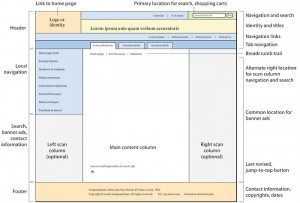It’s estimated that each week over 1 million new websites* are created and “go live”. Many of these websites are built by first time web designers (aka small business owners) with the intent of getting more customers for their business. I wonder how many of these website owners consider the basic principles of good SEO while they are designing their websites?

Getting your website ranked on the search engines is the equivalent of putting up a sign in your storefront window.
Let’s face it. Building a website is the equivalent of putting a sign up in your store window and hoping that it attracts more customers into your store. The problem is if no one ever walks by your store, they will never see your sign.
Similarly, if no one ever knows about your website they will never visit and become a potential customer. It’s for this reason that each and every website owner needs to consider the basic principles of good SEO for their website.
SEO (Search Engine Optimization) can be broken down into two categories;
- On-Page SEO
- Off-Page SEO
In this article I am going to focus on On-Page SEO. In a subsequent article we will dive into the principles of Off-Page SEO. You might also be interested in our article on tips of How to Avoid SEO Over Optimization.
On-Page SEO
On-Page SEO can be summarized as;
On-Page SEO entails modifications to your website’s pages and their structure. Changes can be identified within your website’s title, descriptions, keywords, content, and links that will boost your website’s on-page SEO ranking.
Each page of your web site should be optimized to ensure it get’s the highest ranking possible by the search engines.
The biggest mistake web owners make is in trying to get their website to rank high in the search engines.
Websites do not get ranked by search engines, it’s the individual pages within a website that get ranked!
Consider each page of your website individually when performing On-Page SEO. However, keep your website’s purpose in mind and ensure that your web pages do not drift away from the common purpose of your website. As individual pages of your website move up in the search engine rankings so will your overall website gain in ranking performance.
A Breakdown of the Basic Principles of Good SEO
In the following list I have ranked what I consider to be the basic principles of good SEO for On-Page optimization of your website.
- Keywords – Keywords are the keys to good SEO. Keywords are the search terms a visitor uses when searching on search engines, like Google, for information. To rank well in the search engines requires an understanding of what your target visitors are searching for as it relates to your website. Keywords also form the basis of your webpage’s content.
- Content – Content defines the information provided on your website. Your content should be relevant to your website’s purpose and provide value to your website visitors. Your content should also match the keywords that you have chosen for the page.
- Link Structure – Links within your article should have a even mix of internal and external links.
- Internal links should link to other pages within your website that contain content that is relevant to the content you are linking from.
- External links should link to other websites across the internet that also contain relevant content to yours.
- You need to be careful with adding too many links within your content. Try to keep your links to an even mix between internal and external and no more than 3 or 4 links total.
- Metadata – The information provided within the page that describes the page. This information is normally not visible to your visitors but is used by search engines like Google to describe your page and help the search engines to properly classify and rank your website’s pages and content.
- Title – Give every page of your website a unique title. The title defined for the page should match the content of the page and include you pages keywords.
- Description – Provide a brief summary of your webpage’s content in a short description. The description should be unique from the content. In other words, don’t just copy a paragraph from your content and include it as a description of the page.
- Keywords – This is where you provide your keywords for the search engines. Ensure the keywords adequately relate to the content provided on the page.
For every page of your website, if you follow the above list and ensure that you optimize the page in each category as defined above, you will ensure that your website’s page has the basic principles for good SEO applied.
Summary
On-Page SEO is the process of ensuring that your website’s pages are optimized for inclusion in search results, your potential customers are using, when they enter their search terms (keywords) on search engines like Google and Yahoo. By ensuring that your pages get searched and ranked by the search engines you will build visitor traffic to your website. In our analogy of the sign in your store front, the more people that see your sign, the more customers you will gain for your business.
This is the first part of a two part article on Basic Principles of Good SEO. Watch for our next article detailing the principles for Off-Page SEO.
* Reference – Internet 2012 in Numbers, dated January 16, 2013, royal.pingdom.com
[lastupdated]







[…] our previous post “Basic Principles of Good SEO“, we mentioned that there are two categories that you should focus on for your SEO efforts. […]